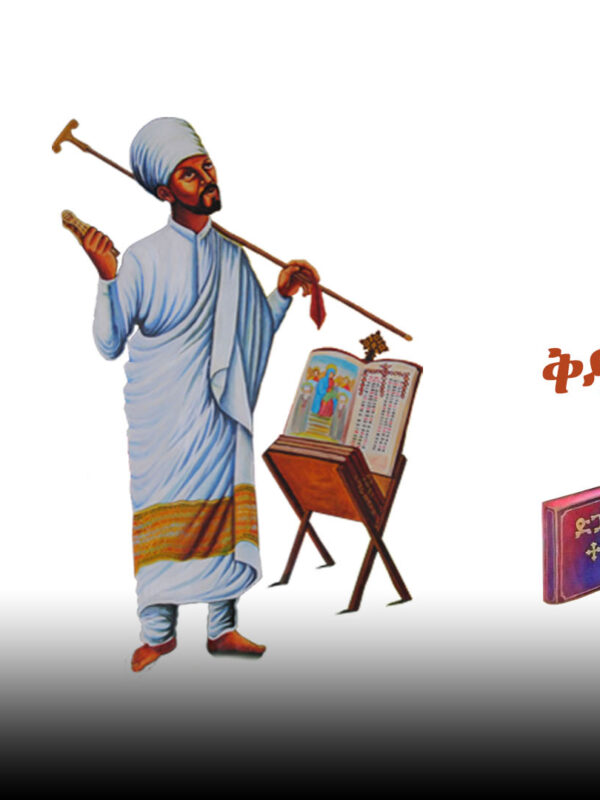Composer, scholar, and pioneer of musical notation, Saint Yared was born in Axum, Ethiopia on April 25, 505 AD. He made it into lasting historical records by writing many religious doctrines and forming ten musical notes.
Long before the Europeans developed musical notations, we already had it at Axum, developed by Saint Yared. We failed to use it and they were able to utilize and own it. Centuries later it came back to us as a new curriculum.
Saint Yared was born on Miazia (April) 5, 525 AD in the city of Axum to his father Abyud (Isaac) and his mother Christina (Tawklia).
His parents were born and raised in Axum. When Saint Yared was seven years old his father died. His mother gave the young Yared to his uncle Gedeon to raise and take care of him. Gedeon was the Gebez (Treasurer) in Aksum. School was hard for young Yared. He never understood the Psalms of David. Because of his terrible weakness in school, he was confronted with his angry uncle at home and occasionally faced physical punishment. Young Yared tried to learn and understand the teachings of the church for over seven years, but he always failed. He was tired of the anger and punishment and life was becoming difficult for him.
One day, young Yared ran away. He traveled for the entire day and he came to rest under a tree. He was crying and painfully hungry. In the middle of his anger and frustration, young Yared noticed a small insect trying to climb up the tree. The insect tried once, it failed. Tried the second time, it failed again. The insect tried to climb the tree six times and it failed. Without giving up, it continuously tried, and by the seventh time it succeeded to climb up the tree and ate the fruits. After intentively following, young Yared was surprised. He learnt a great wisdom of God through the little insect.
He went back running to his uncle. He apologized for his behavior. He started school the next day. He finished 150 Psalms of David, the books Prophets, and King Solomon including the translations and the laws of the church. Young Yared became a server of St. Mary Zion, Axum.
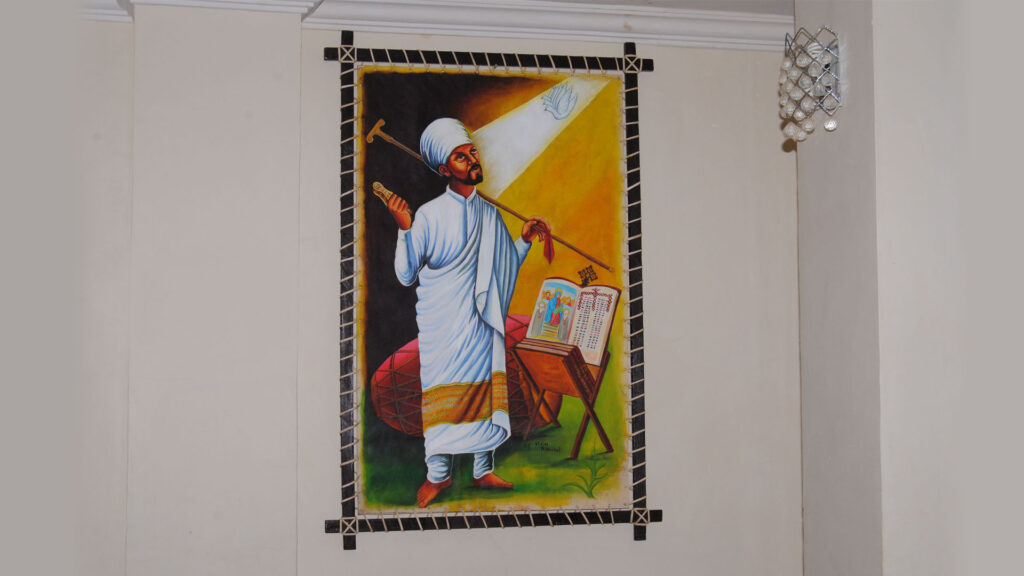
At that time, singing loudly was not allowed. One day, three birds came flying toward young Yared. The first bird was Green, the second bird was yellow, the third bird was red in color. [Exactly the same as the Ethiopian flag]. The birds exemplified the Father, the Son and the Holy Ghost. The birds also exemplify the melodies named as GEEZ – green bird, IZIL – yellow bird and ARARAI – red bird. As indicated in Genesis Chapter 22, No 28-31, one of the birds said to young Yared “Yared the Great one, you are holy, the stomach that carries you is holy”. Then the birds disappeared.
Young Yared was deeply contemplating about the heavenly Jerusalem. He heard the angels gathered around God and Begena (Ethiopian Harp). Young Yared learnt the heavenly musical praise. He went back to the city of Axum and entered the church of Zion and stood in front of the Ark of the Covenant (Tabote Tsion). He started praising the lord by singing in GEEZ loudly:
Geez
Hale luya le-Ab
Hale luya le-wold
Hale luya le- Menfes qidus
kedamiha le-Tsion Semaye sarere
webedagim arayo le-Muse
Ze-Keme yigebir gebra le-debtera
English
Praise be to the Father
Praise be to the Son
Praise be to the Holy Ghost
Prior to Zion God created the Heavens God showed Moses the tent
He called this song the rhythm of Aryam (Zema Aryam). Which means a rhythm that came from the angels or the heavens. This rhythm will never be lost until the end of this world. The Gift of God can never be destroyed by man. Civilizations pass but praising of God in heavenly manner would never cease. The word Aryam translates as “above all”. We can find the word Aryam in several places in the bible. The angels sang “praise be God BeAryam”, when Jesus was born from Saint Mary. When Jesus came to Jerusalem on an Ass, the people sang “Hosanna BeAryam”.

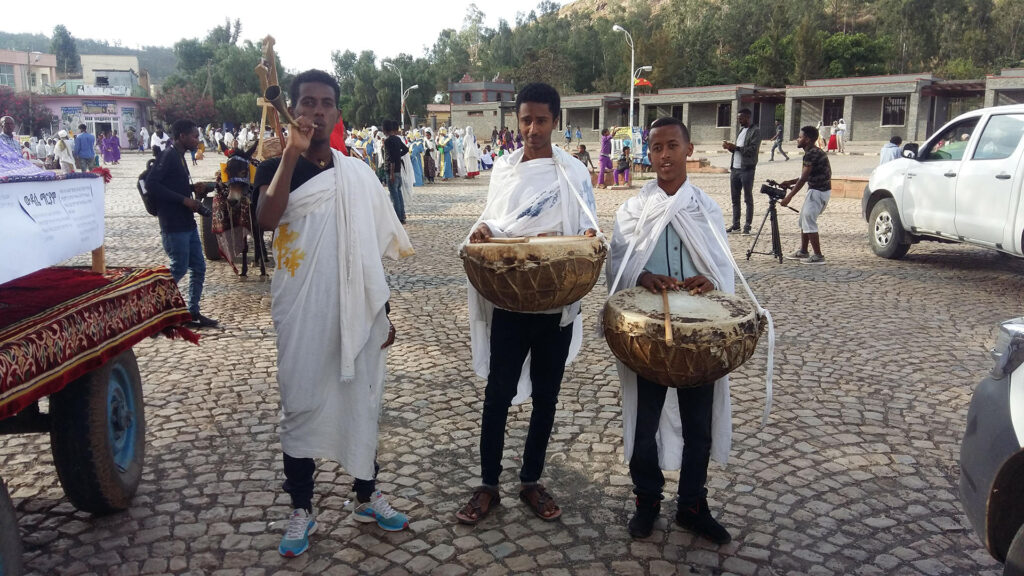

Saint Yared thought us the rhythm of Aryam. While from this world, God chose Saint Yared to hear and learn the songs of the angels in the heavens. He heard something extraordinary, a song for the heart and the soul. He was amazed and mesmerized by that sound from the heavens. He expressed his admiration by singing:
Geez
Wai Zema ze-sema-Eiku
be-semaiy I-melaIkt qidusan Inze Yiblu
Qidus Qidus Qidus IgeeziAbher
MeliA Semayate We-Medre
Qidisate Sibhatike
English
The Holy of Holy our Lord I heard the angles singing “Your praises saying, Holy Holy o Holy- a parise that filled the Earth and the Heavens”
Saint Yared served and praised lord for the rest of his life. He died on Gunbot (May) 11, 571 AD.
God told us to praise him as do the angels following the example of saint Yared. The rhythm and the songs are always new. They never get old.
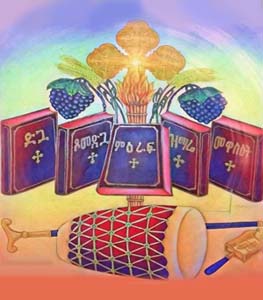
Works of St. Yared
He is credited with the forerunner of traditional music of Tigrai, Ethiopia and Eritrea, he developed the music of the Tigrai Orthodox Church, Ethiopian Orthodox Church and Eritrean Orthodox Church, and the use in liturgical music, as well as the Tigrai, Ethiopian and Eritrean musical notation system. Additionally, he composed Zema, or the chant tradition of those states, particularly the chants of the Tigrai, Ethiopia and Eritrean Orthodox Tewahedo Churches, which are still performed today.
Saint Yared Musical Notation
Deret: represents the resurrection and ascension of Jesus Christ
Difat: Jesus came to this world
Zu: Jesus thought us
Qurt: Jesus decided/promised to save Adam from death
Yezet: Jesus was caught and beaten by the Jews
Qinat: Judah has given up Jesus to the Jews
Chiret: Jesus Christ was beaten
Hidet: Jesus was take to Hanna and to Pilatos
Rikrik: JesusRis: The prophesy told by David was realized on Friday.
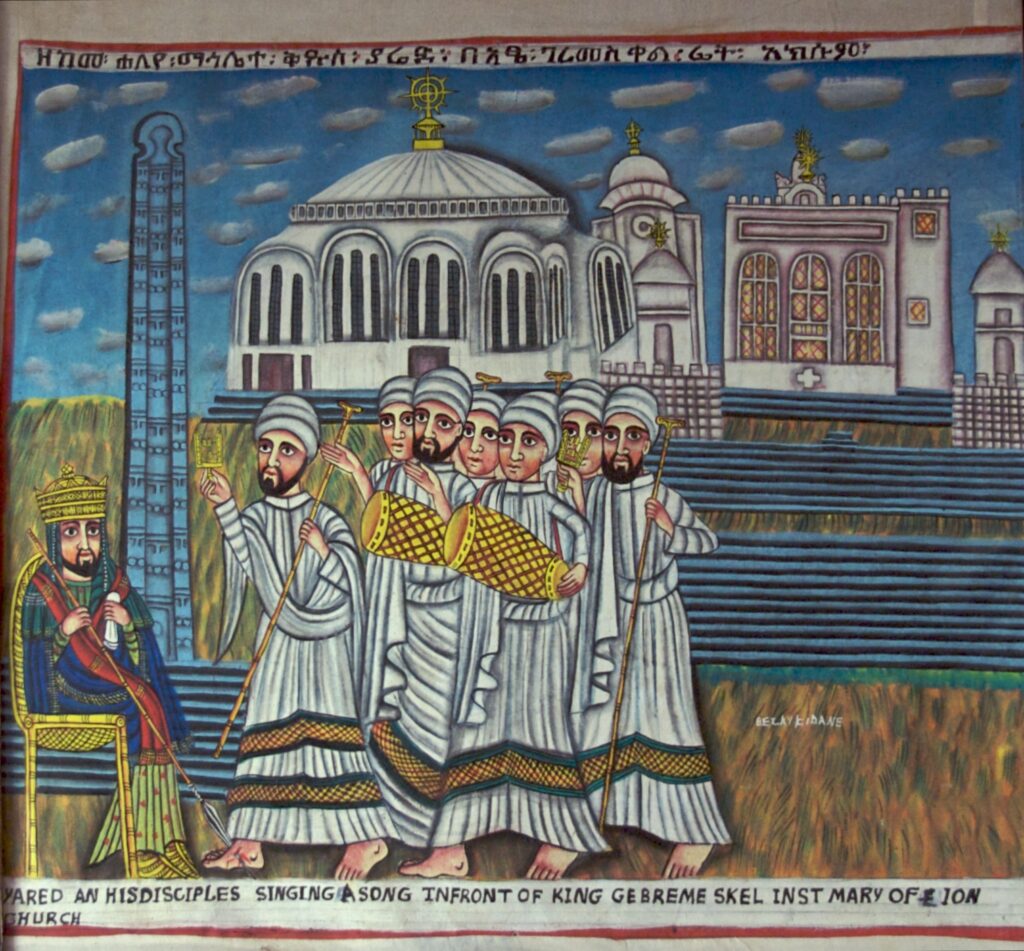
The ruler of “Ethiopia during this time was Gebre Meskel (525-539 A.D) the son of the renowned Emperor Kaleb.” “The fact that during his reign Ethiopia produced her greatest musician and poet, Saint Yared, who as the creator of Zema (music) and poetry, surpassed all, pleased the Emperor so much that he was content to conduct the matters of state and leave to Yared the affairs of the Church.” “Together they instituted the celebration of Hosana (Palm Sunday) in the city of Axum. This custom which they established is still practiced in churches throughout Ethiopia. Ethiopia by priests and choirs of debteras.” “These hymns are accompanied by various musical instruments created by Yared giving the performance more fullness. The singers chant in a choir in harmony with the melody, slowly moving their prayer sticks back and forth or up and down in an orchestrated movement known as tirkeza. The beating of the drums and the rattling of the sistra also join in to make the music more melodious.”
This charming painting contains an interesting anachronism. The scene it depicts occurred in the sixth century AD, but it is shown as taking place in front of the 20th century New Church of St. Mary of Zion. This observation is in no way intended as a criticism. To the contrary, I am intrigued by the artist’s fluid use of time in creating his narrative.

Source: Ethiopian Orthodox Church and other sources.
As you can see, long before the Europeans develope musical notations, we already had it at Axum. We failed to use it and they were able to utilize and own it. Centuries later it came back to us as a new curriculum.

